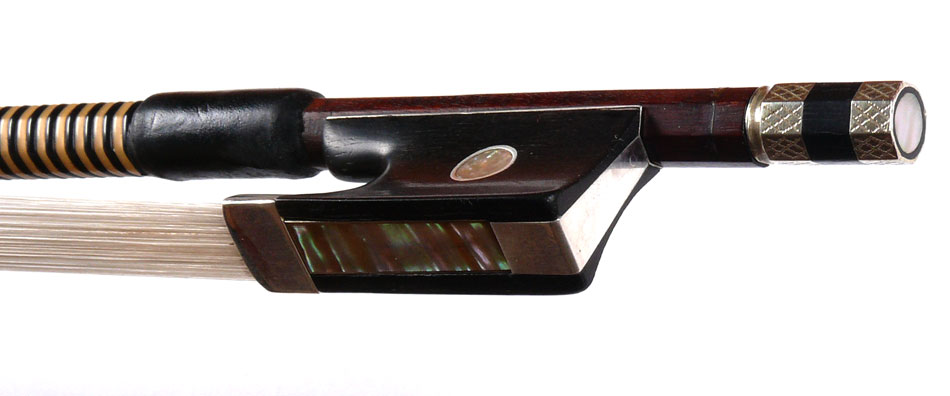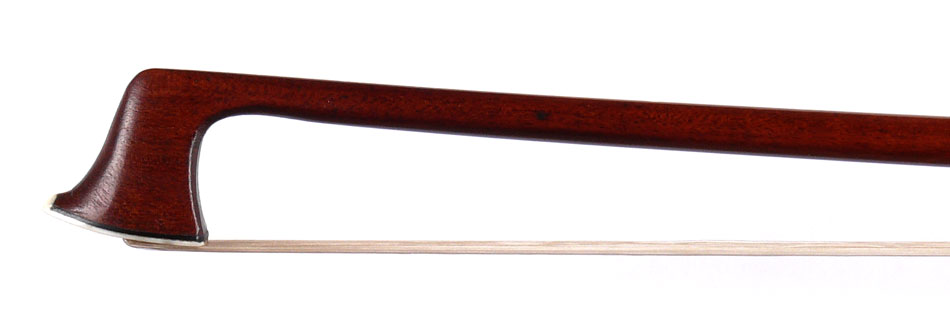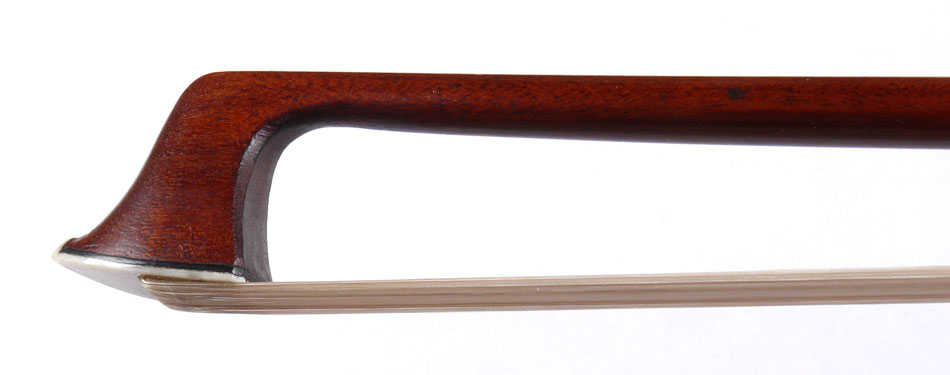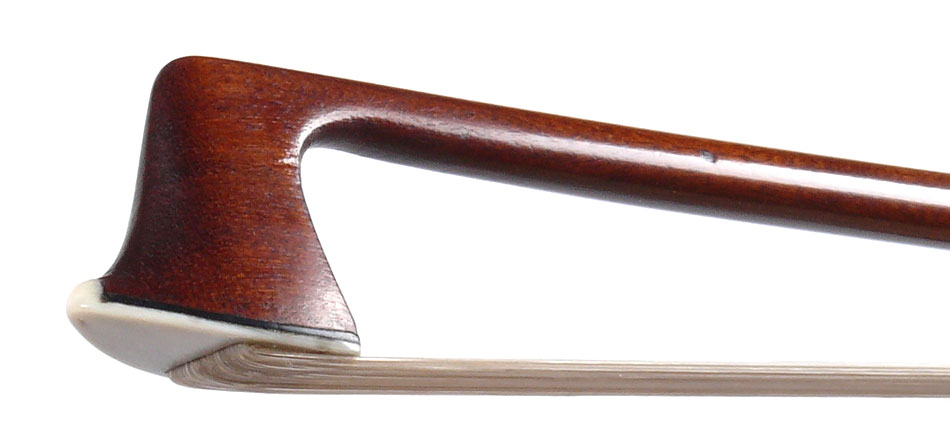|
Eugène Cuniot (1861-1912) married a lady named Hury and stamped his bows 'Cuniot-Hury'. After his death the business was perpetuated by his assistants - from 1914 to 1920. During his lifetime he received numerous awards and diplomas of achievement and he is today considered a respected and important French bow maker. He produced a line of bows stamped 'Renaudin Paris', as this bow is, and it is almost certain that this bow is his work.
There were several Renaudins in French violin making and only one of them was established as a bow maker - he was active in Mirecourt from about 1850 to 1867, but simply stamped his bows Renaudin. Furthermore, this bow does not appear to be as old as to have been made in that time.
This bow probably dates from around 1880 to 1900. The frog likely is not original, but fits well and is in good condition. The stick is splendid by all standards - cut round of very beautiful Pernambuco with distinct flame, in excellent condition and perfectly straight.
There has been a minor repair to the grip area: a small insert was made at the top of the adjuster mortise. Furthermore, approximately 4 mm of wood has been grafted on at the adjuster end of the stick - no doubt to compensate for wear and much use through about 120 years. Both grafts are well done and stable and pose no risk to the security of the bow.
This is a good bow by all standards: the playing properties are really fine - nicely balanced and making for excellent articulation and control. This bow has the properties that have made French bows so much in demand.
|
|
|
The Stick :
|
| |
Round. Excellent light-brown flamed pernambuco.
|
|
The Nut :
|
| |
Ebony. Later, but old. Good condition.
|
|
Mountings :
|
| |
Silver. The adjuster button is not original and of nickel-silver.
|
|
Wrapping :
|
| |
Imitation whalebone lapping. Black leather thumbpad. All recent.
|
|
Tip Slide :
|
| |
Appears to be mammoth ivory. Not original. The peak is separate from the slide, but the seam is indiscernable.
|
|
Condition :
|
| |
The length of the shaft is in excellent condition. About 4 mm of wood has been grafted onto the adjuster-end of the stick. A small insert has been grafted above the adjuster mortise - all secure. (Seen photo)
|
|







